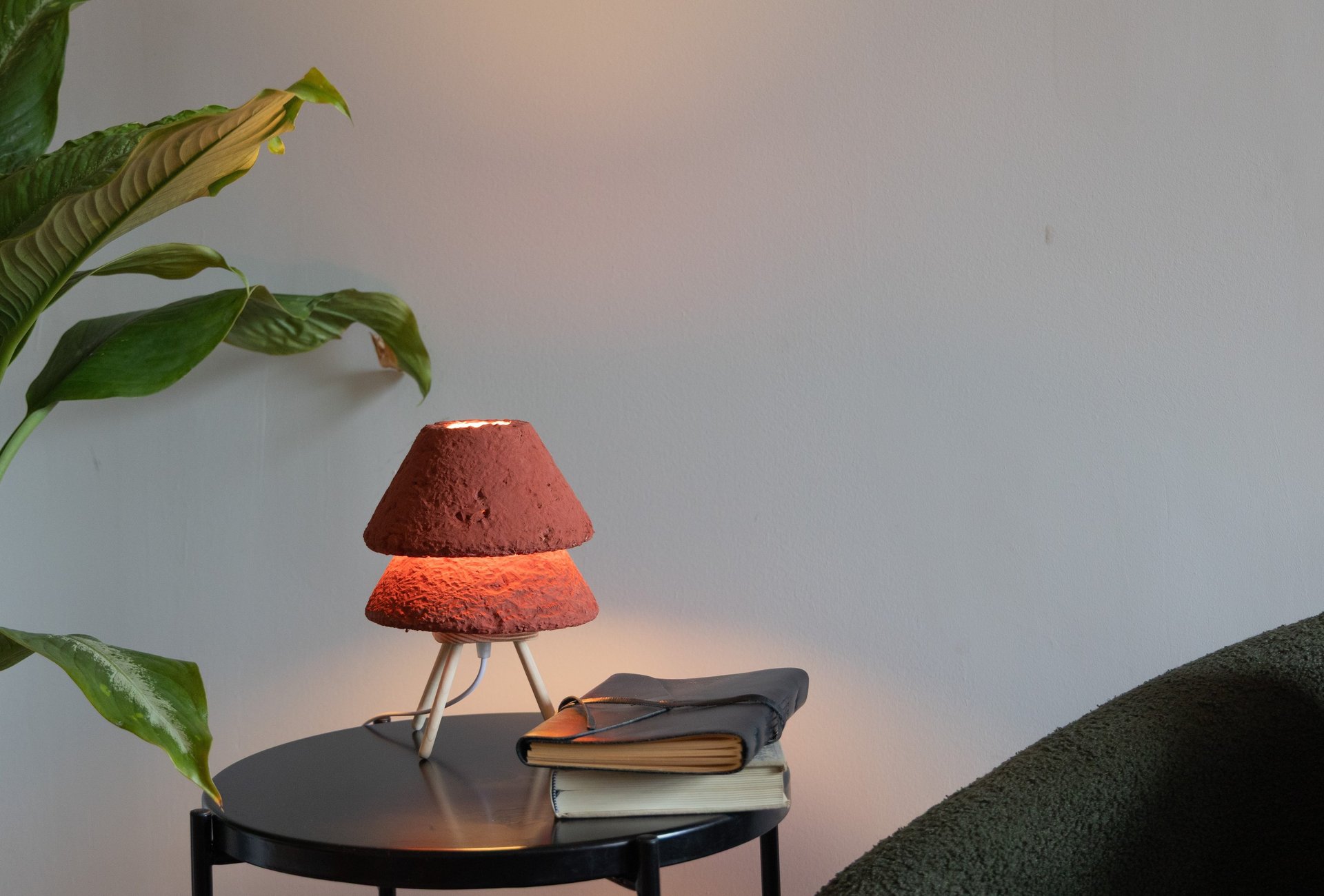


THE GUILT FREE LAMP
ADAM CLIFFORD
nogu (short for no guilt) is a lamp made from mycelium with the goal of providing a truly sustainable product at an affordable price to bring this amazing material to a broader audience
THE PRODUCT
GOALS
Bring mycelium to a broader, everyday audience
Create a lamp that is affordable, compostable, and handsome
Prioritize the end price point without compromising beauty or sustainability
GUIDING QUESTIONS
Is manufacturing sustainably at a medium or large scale possible?
Can products actually help the environment rather than harm it?
MAYA
One of my goals was to make mycelium more visually appealing to a broader audience, despite its naturally unpredictable and unusual textures.
I drew on the MAYA principle, Most Advanced Yet Acceptable, a design theory by Raymond Loewy that suggests people are more likely to embrace innovation when it’s presented in a familiar way.
By using a simple, recognizable form and finishing it with milk paint to soften the texture, I aimed to highlight the beauty of the material while keeping the overall design approachable.
SKETCHES
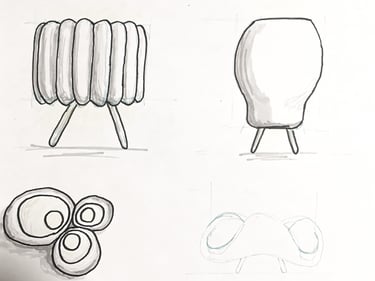

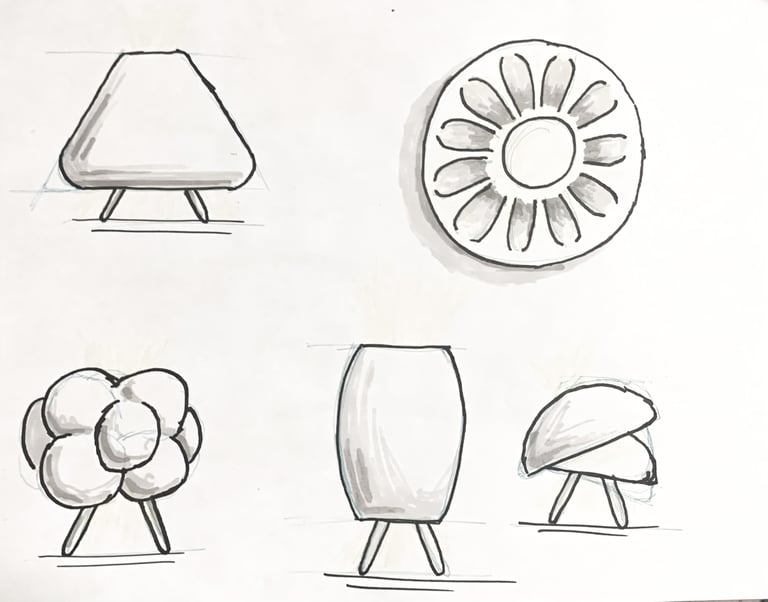

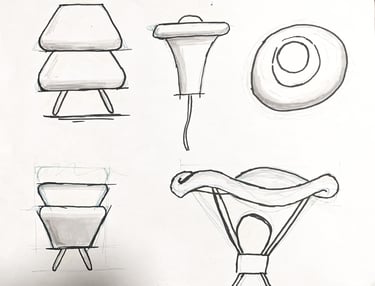

For the form, I was inspired by the various shapes of wild mushrooms
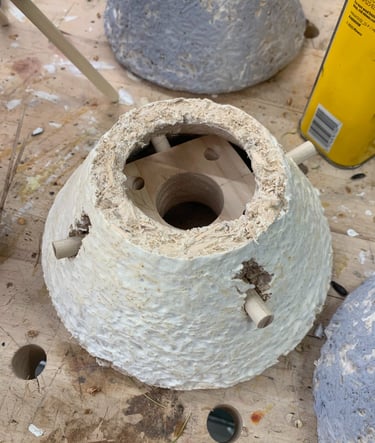

The first issue I faced in making the nogu lamp was finding a way to suspend the top shade above the lower shade
MAKING THE LAMP
My first idea was to drill through the mycelium and have the dowels connect the the base
This created ugly holes and made the assembly quite difficult
After this, I tried adding the dowels in the mold with the mycelium so the mycelium acts as a natural glue
This worked very well and created a strong bond between the dowels and the mycelium
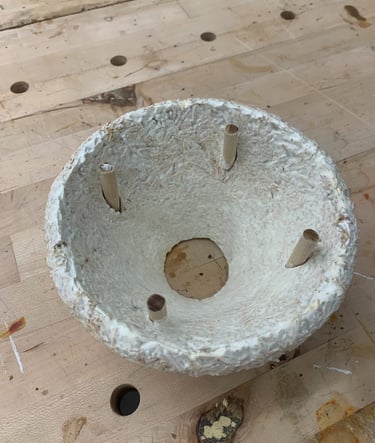

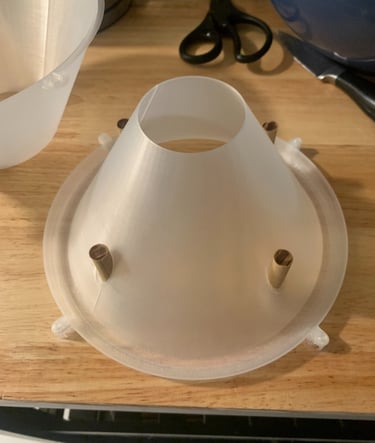

MAKING THE BASE
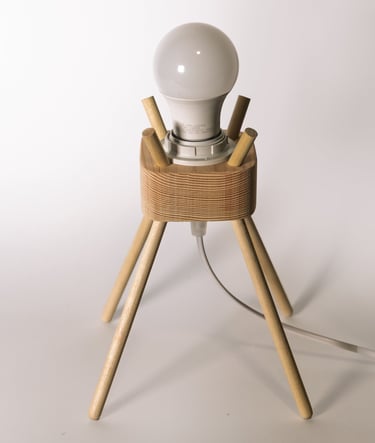

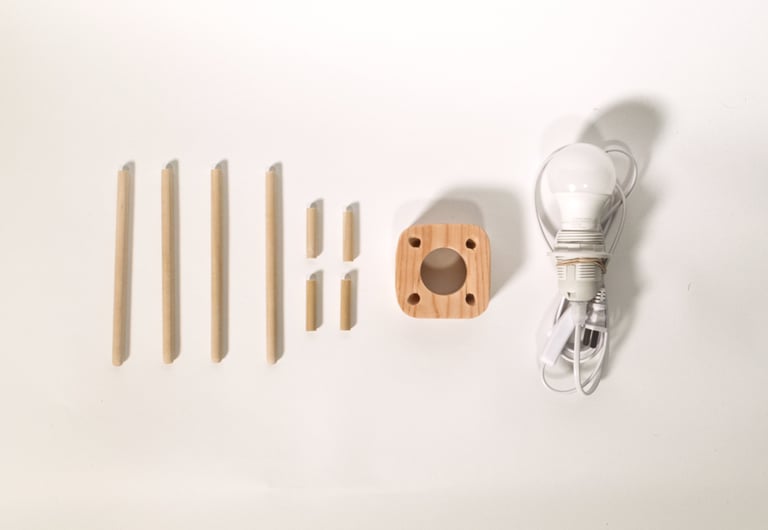

The base is made without any glues or hardware. The large part of the base is made from 2x4 scraps and the light bulb is easily removable and replaceable, making it safe for disposal
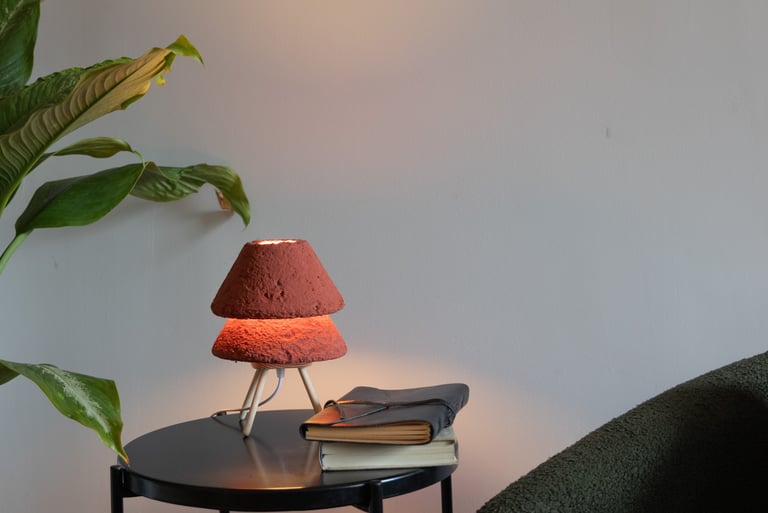

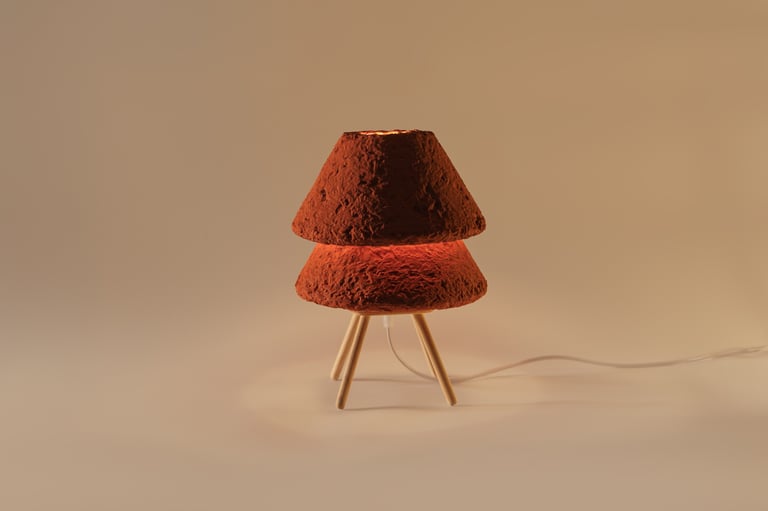

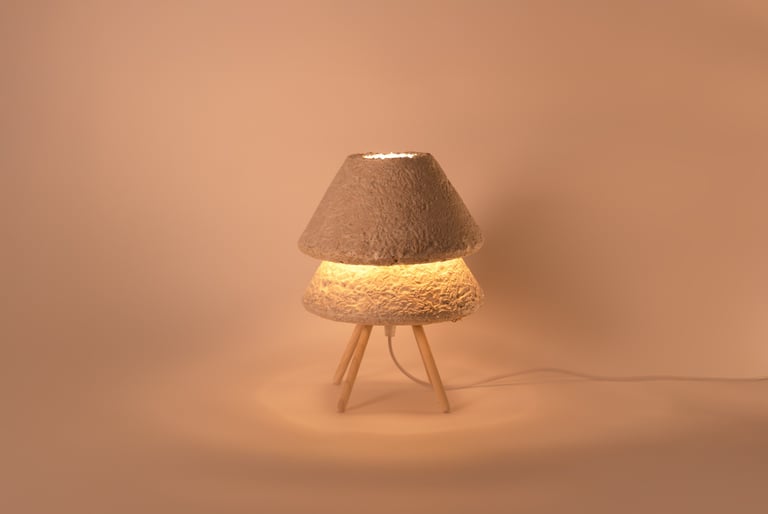

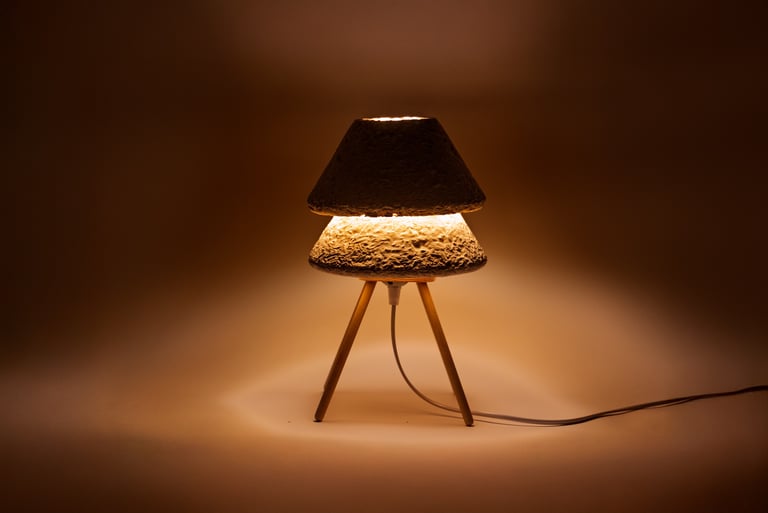

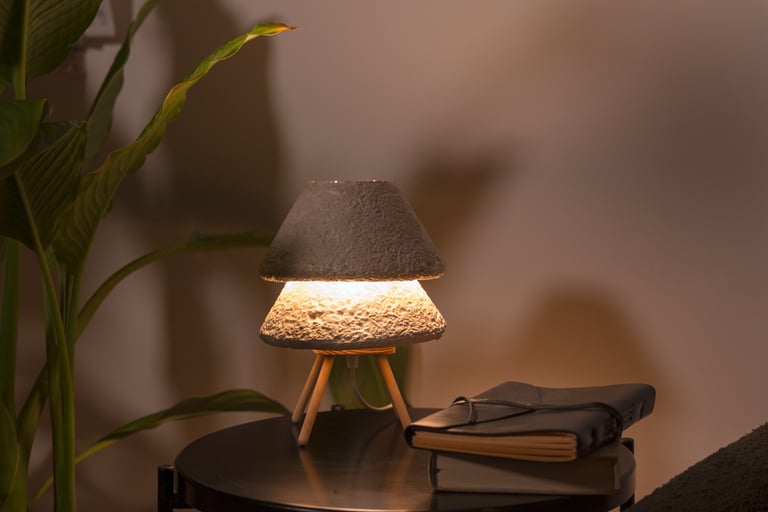

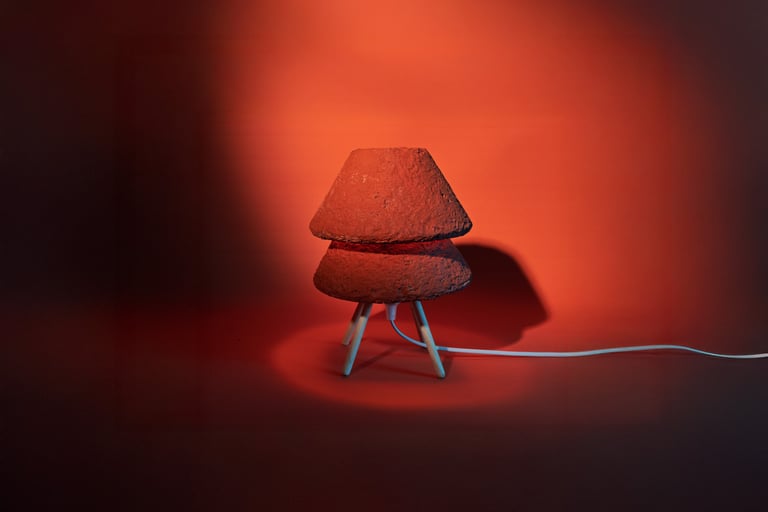

PHOTOS
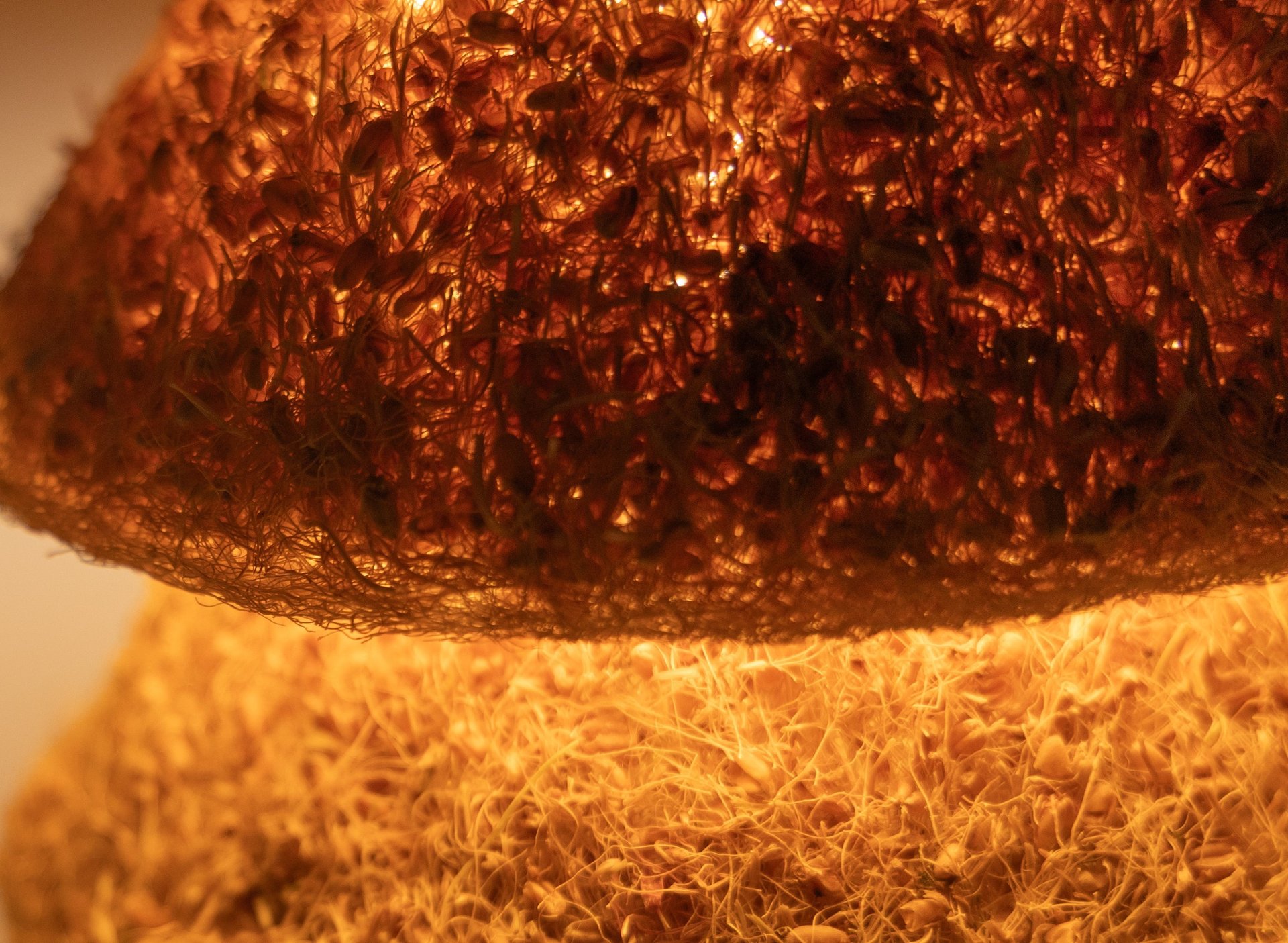
ADDITIONAL EXPLORATIONS
For this project, I also wanted to explore other materials that the nogu lamp could be made from
THE GOAL
Create biomaterials that have positive externalities
WHEATGRASS ROOTS
Material 1
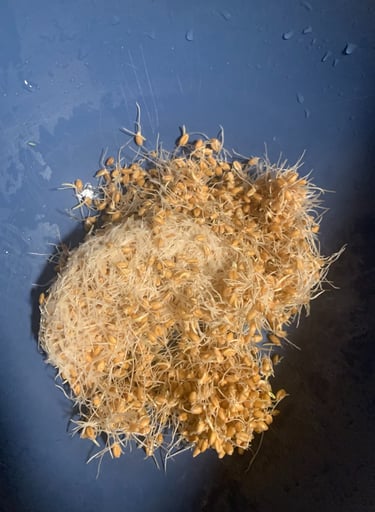

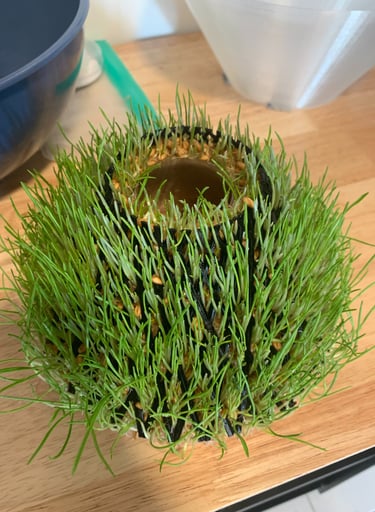

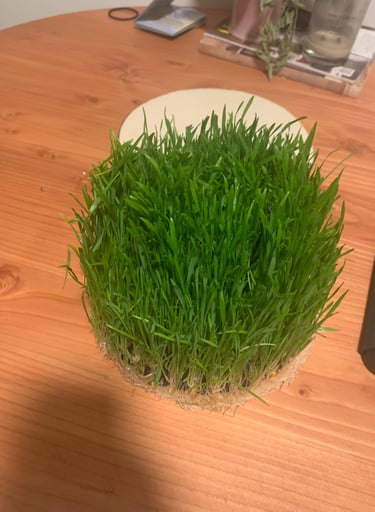

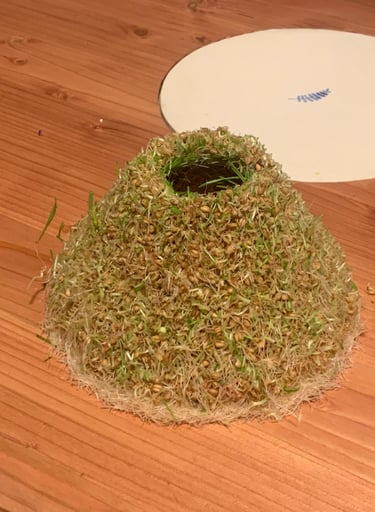

The wheatgrass seeds are sprouted in a bowl of water and then placed in a mold and watered twice a day
After the grass has grown out, it is cut and put into smoothies. The roots are dried out and used as the lamp shade
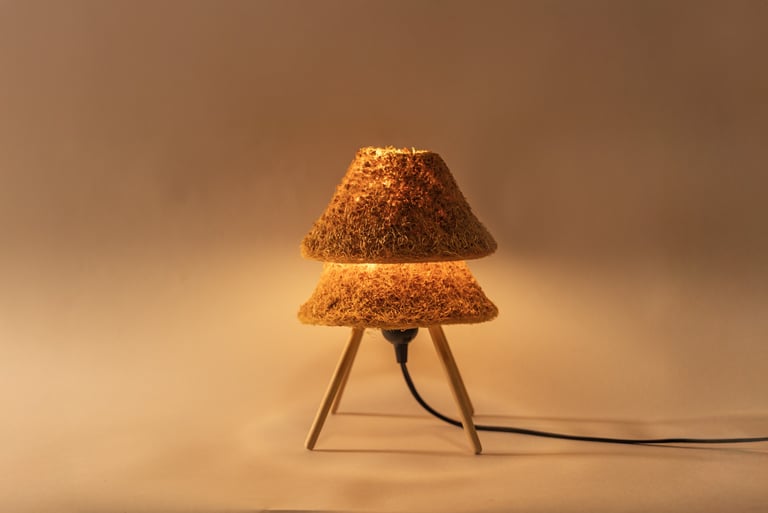

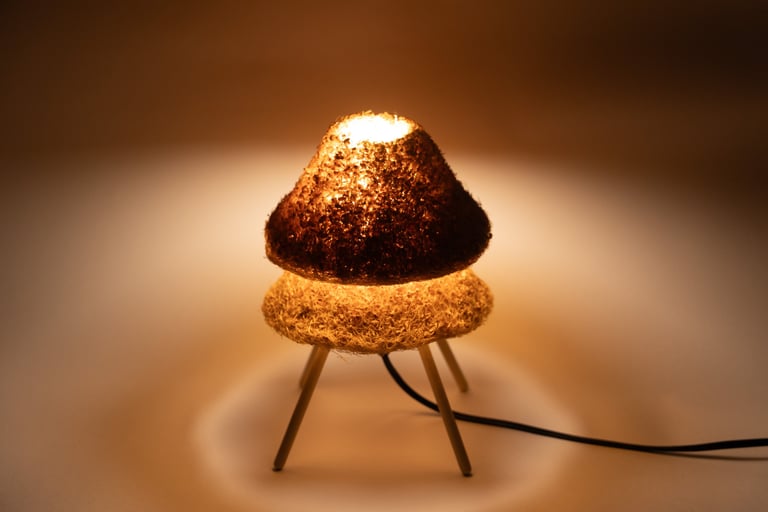

By using wheatgrass, there are three positive outcomes in manufacturing:
The grass cleans the air as it grows
Edible wheatgrass is grown
A fully compostable lampshade is produced
SUNFLOWER SEEDS
Material 2
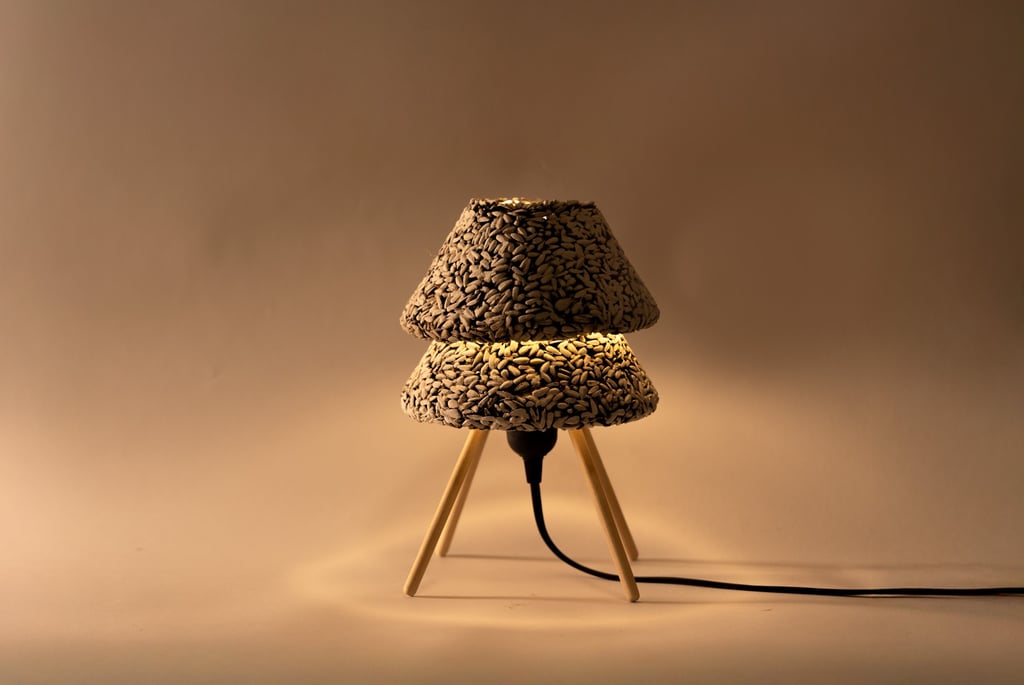

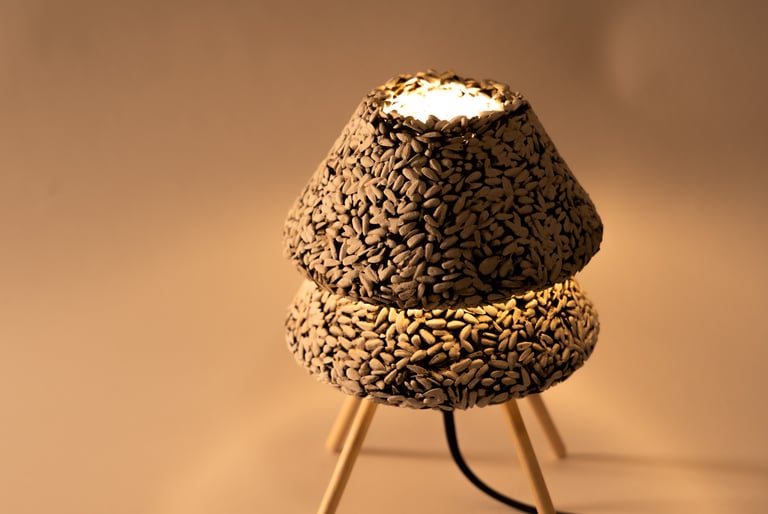

The sunflower seeds are bound together using a glelatin based bioplastic. By not altering the seeds, they still fully function as bird seed or plantable seeds. In this way, the material is simply being "borrowed" rather than consumed—temporarily shaping it into a lamp shade instead of forever changing it.